Latest Thread
- Iran Jaljaleh Aerial Mines Against Drones and Helicopters
- Ukraine Armored vehicles are being equipped with "Yezh" protection.
- Is Denmark's new ground-based air defense a new IC4 scandal?
- Analysis Think tank: Behind new data center in Norway lies the White House's strategy for AI world dominance
- Poland SAAB A-26 Submarine for Polish Navy
You are using an out of date browser. It may not display this or other websites correctly.
You should upgrade or use an alternative browser.
You should upgrade or use an alternative browser.
Mk2 will be seen after 6 monthsSeems like if same leadership returns in 2024 , we will see some serious development in the AMCA and LCA MK2
What I meant was induction in forces , this Russia-Ukraine conflict has proved one , we cant even choose a neutral way if we are dependent on foreign arms .Mk2 will be seen after 6 months
Hopefully generals and ACMs will understand this and we will have a decent ecosystem for arms like automobiles
Even if MoD falls in place, it's hard to bring the armed forces in line since the import lobbies have embedded too deep with all current and upcoming top brass expecting kickbacks so that their next 10 generations can be settledWhat I meant was induction in forces , this Russia-Ukraine conflict has proved one , we cant even choose a neutral way if we are dependent on foreign arms .
Hopefully generals and ACMs will understand this and we will have a decent ecosystem for arms like automobiles
Unfortunately, none of the Indian firms like Kalyani, L&T, Punj Loyd etc can offer such competitive kickbacks...not to mention, these foreign firms and lobbying groups having the backing of their govts
You are right we all know what happen to Arjun , even LCA was literally saved by Manohar Parrikar . Hopefully the decision makers will take some wisdom from Ukrain war and promote local arms . Initially the product may not be best in world but gave enough scope and motivation to local industry .Even if MoD falls in place, it's hard to bring the armed forces in line since the import lobbies have embedded too deep with all current and upcoming top brass expecting kickbacks so that their next 10 generations can be settled
Unfortunately, none of the Indian firms like Kalyani, L&T, Punj Loyd etc can offer such competitive kickbacks...not to mention, these foreign firms and lobbying groups having the backing of their govts
They can buy M777 but have issues in ordering the similar platform offered by Bharat Forge . Mazgaon docks got the TOT from Germans and French to built submarines but I bet still they cant . on the other if L&T got the P-75i , they will definitely absorb the TOT and come out with their own Submarine like South Korean after getting TOT for Type 214.
Oil and arms two major imports if we can even cut one , that will definitely save a lot of foreign exchange
Now really wish they make the plane with same speed
Already fabrication startedNow really wish they make the plane with same speed
Engine is missing though. Even if ADA intends to use GE-414 for the prototypes, we didn't receive any yet while the GTRE-Safran engine still has a long way to goAlready fabrication started
Seems like if same leadership returns in 2024 , we will see some serious development in the AMCA and LCA MK2
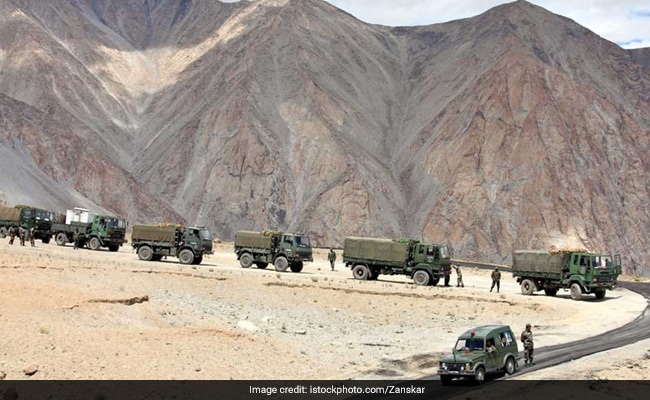
MPs' Panel Warns Against Military Funding Cut, Cites Border Tension
Adequate budgetary allocations must be made available to the armed forces in view of the present scenario of heightened tensions with certain neighbouring countries, the Parliamentary Standing Committee on Defence said on Wednesday.
Even now defense isn’t in their top priority list. 2024 could be worse.
Three already hereEngine is missing though. Even if ADA intends to use GE-414 for the prototypes, we didn't receive any yet while the GTRE-Safran engine still has a long way to go
They're for MWF since it's at a relatively advanced stageThree already here
I meant delivery have begunThey're for MWF since it's at a relatively advanced stage
They're at the risk of being stopped given our stance towards Ruso-Ukr war. It's time GoI pumps in $5bn and engages all major private Indian defence firms and research orgs to develop an engine on war footing while simultaneously ensuring the project is immune to lobbyingI meant delivery have begun
On Russia-ukraine front not much will happen , secondly french partnership is going to be officially declared soon .They're at the risk of being stopped given our stance towards Ruso-Ukr war. It's time GoI pumps in $5bn and engages all major private Indian defence firms and research orgs to develop an engine on war footing while simultaneously ensuring the project is immune to lobbying
They're at the risk of being stopped given our stance towards Ruso-Ukr war. It's time GoI pumps in $5bn and engages all major private Indian defence firms and research orgs to develop an engine on war footing while simultaneously ensuring the project is immune to lobbying
Just need to hold the mirror and employ reverse uno cards were needed with the minefield coming out purely on their end itself:
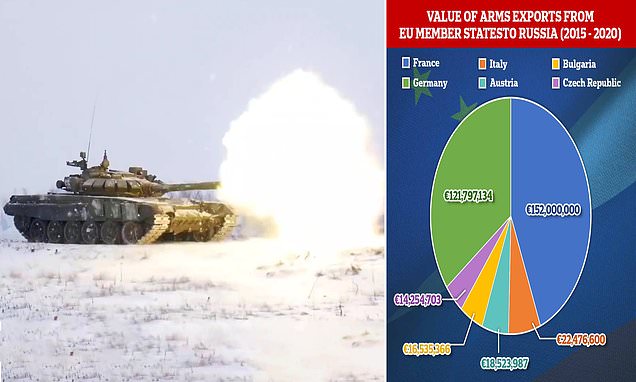
France, Germany and Italy sold arms to Russia despite embargo
France, Germany and Italy used a loophole in a ban of exporting arms to Russia to send the Kremlin €296million worth of military equipment that is now being used against Ukraine.
There is a 30 year backlog to show them with just themselves using their own logic now.
Dont even need to bring up the west's hypocrisy in our region (where their transactional need triumphed everything else no matter what) at large at all.
The risk is very low, they know all of this themselves (where it matters) to begin with.
Despite partnering with the French, I'm unsure if we'll gain anything fruitful on the front. Rafale contract had two primary clauses, one being Safran helping GTRE with the Kaveri engine while the other being offset clause both of which they haven't met. Now MoD imposed a meagre fine of around $1mn on MBDA for not meeting the terms of offset clause...this fine is hilarious given Dassault might've paid way more in kickbacksOn Russia-ukraine front not much will happen , secondly french partnership is going to be officially declared soon .
https://timesofindia.indiatimes.com...-rafale-fighter-deal/articleshow/88420692.cms
Similarly, the French might use all tactics and lobbying to stall this engine JV while trying to push for additional Rafales
Maybe ,maybe not , if deal is pushed by government then they may want to go aheadDespite partnering with the French, I'm unsure if we'll gain anything fruitful on the front. Rafale contract had two primary clauses, one being Safran helping GTRE with the Kaveri engine while the other being offset clause both of which they haven't met. Now MoD imposed a meagre fine of around $1mn on MBDA for not meeting the terms of offset clause...this fine is hilarious given Dassault might've paid way more in kickbacks
https://timesofindia.indiatimes.com...-rafale-fighter-deal/articleshow/88420692.cms
Similarly, the French might use all tactics and lobbying to stall this engine JV while trying to push for additional Rafales

How India finalised the design for its indigenous stealth fighter jet
Scientists behind the design explains how the Tejas experience helped
Scientists behind the design explains how the Tejas experience helped
By Pradip R. Sagar/Bengaluru Issue Date: May 01, 2022 Updated: April 24, 2022 10:11 IST
The circular, three-storey building is quite unremarkable. But, it is home to something hush-hush and hi-tech. It is the headquarters of the Aeronautical Development Agency (ADA) in Vimanapura, an eastern suburb of Bengaluru and an aeronautical hub. This is where India’s top defence scientists, helped by 250-odd assistants, are building a fifth-generation stealth fighter.
As a fifth-generation stealth fighter, the AMCA is designed for low-observability. That is, it would not be easy to detect it and even when detected the AMCA can ‘disappear’ and get close to the target, giving the enemy little reaction time.
The AMCA project is critical for the IAF. The world’s fourth largest air force is grappling with its depleting combat fleet; it is down to 32 squadrons, against its sanctioned strength of 42.
The most important part of the avionics is an “electronic pilot” feature. Conventionally, a fighter platform requires two pilots. The AMCA will have a single cockpit accompanied by an electronic pilot.
Stealth technology has so far been dominated by the Americans. Even Russia and China have not developed the capability. Unsurprisingly, the ADA HQ is sheathed in multi-layer security cover. THE WEEK became the first publication to be invited to Vimanapura to report on the Advanced Medium Combat Aircraft (AMCA).
Stealth aircraft are designed to avoid detection by enemy radars or air-defence systems. As a fifth-generation stealth fighter, the AMCA is designed for low-observability. That is, it would not be easy to detect it and even when detected the AMCA can ‘disappear’ and get close to the target, giving the enemy little reaction time.
As Girish S. Deodhare, director general, ADA, explains: “Stealth aircraft are required in the early stages of war to take out the enemy’s air defences. Once you destroy the air defences, other fighters like the LCA (Light Combat Aircraft) can take over.” He said the design of the AMCA was complete. “Now, it is just a matter of making the jet,” he added. A fighter jet has close to 15,000 components and the design of each part has been finalised.
Stealth technology is achieved by using a combination of techniques that reduce the reflection or emission of visible light, radar, infrared, radio frequency spectrum and audio. Advanced stealth features include “serpentine air-intake” (which helps reduce infra-red signature), an internal bay for smart weapons (as opposed to wing-mounted weapons) and radar-absorbent material. It can achieve supersonic cruise speeds without the use of afterburners, and will have AESA (active electronically scanned array) radars, which can scan different directions simultaneously.
A single-seater, twin-engine fighter, the AMCA will be 17.6m long, with a wingspan of 11.13m and a maximum takeoff weight of 25 tonnes. While the AMCA Mark-1 will be a fifth-generation fighter, the Mark-2 is likely to be sixth-generation. The Mark-2 will also have indigenously manufactured engines instead of the Mark-1’s US made engines (F414 from GE Aviation). Deodhare said that several countries had expressed interest in collaborating on engine development for the Mark-2.
The project’s initial development cost is estimated to be close to Rs15,000 crore. Experts estimate that the US’s fifth-generation stealth fighters—the F-22 Raptor and the F-35 Lightning II—would have cost around Rs1,86,150 crore and Rs1,06,875 crore, respectively, from the design to development stage. Both were developed by Lockheed Martin. The F-22, the first fifth-generation fighter, was developed in 20 years (1983-2003) and the F-35 in 16 years (1995-2011). As things stand, the first AMCA might roll out by around 2026. It was in 2005, when the F-22 was launched, that the ADA formed a small study group to understand the capabilities of a fifth-generation fighter.
The core group to develop the stealth fighter was formed in 2009 with five defence scientists—Ashish Kumar Ghosh, Krishna Rajendra Neeli, M.B. Angadi, A.K. Vinayagam and Fairoza Naushad. The then deputy chief of the Indian Air Force, N.A.K. Browne, gave them the operational requirements of the IAF. The confidence to attempt the design of a stealth aircraft came from the experience the ADA had gained while designing the LCA Tejas.
Ghosh, also known as “Mr AMCA Man”, is the project director. Neeli, the group director, liaises with the ministry of defence and other stakeholders. Vinayagam handles system engineering, Angadi is in charge of configuration (giving shape to the aircraft, and arranging systems and equipment inside), while Fairoza is responsible for avionics.
When the ADA’s attempt began in earnest in 2009, the F-22 was the only fifth-generation stealth fighter in service. It was highly manoeuvrable and could achieve supersonic cruise speeds (at Mach 1.8) without the use of afterburners. “From its technology to capability and its look, a feasibility study was initiated under me with a budget of 090 crore,” said Ghosh. He said that from the outset, the team has been interacting with IAF officers to understand the requirements. He added that the LCA programme had taught the ADA that the development of technologies had to start at the very beginning. “So, we started developing the technologies even while the feasibility study was on,” he said.
The AMCA team’s initial plan was for an all-weather, swing-role fighter jet capable of aerial fights, ground strikes, enemy air defence suppression and electronic warfare. After four years, in 2013, the first feasible configuration was worked out, which was accepted by the IAF. But, in between, a joint venture with Russia to develop a fifth-generation stealth fighter had been initiated following the success of the BrahMos project (an India-Russia JV). The IAF pulled out of the effort in 2018 after several points of contention emerged. For instance, the IAF wanted the capability to upgrade the new fighter without Russian support. Russia refused to share computer source codes that would enable India to do that. The defence ministry was also pulled in two directions over the two fifth-generation fighter programmes. All this led to delays in the AMCA project, before the IAF ultimately decided to concentrate on it.
The involvement of IAF pilots in aircraft design had started in 1996 with the creation of the National Flight Test Centre. But, the test pilots were only giving feedback about the performance in the air. Feedback from the ground crew was missing. This meant that critical aspects like readiness and maintenance did not get any attention at the design stage. This eventually led to delays in the LCA project. To resolve this issue, a Project Monitoring Team (PMT) was formed for the AMCA project to look after all the aspects. At present, the PMT comprises of 25 IAF officers and is headed by an air marshal. The PMT participates in all ADA meetings and expedites approvals required from the IAF headquarters. Earlier, the ADA had to write to the defence ministry and wait for months to get the IAF’s clearance. Nowadays, all clearances happen in two days. “User (the IAF) involvement is massive nowadays,” said Deodhare. “Both sides (the IAF and the ADA) are convinced of what is physically and technologically achievable.”
During the ill-fated joint venture with Russia, the Russians used to say that developing stealth technology for combat jets requires joint effort from two to three nations. But, Ghosh and his team managed to do it alone. He said that developing stealth technology in India was earlier considered next to impossible. “Developing the stealth features, its shape, paint coating and radar-absorbent material, is a closely guarded secret,” he said. “Though it took a lot of time, each and every material that makes the aircraft stealth has been finalised.”
Ghosh added that in the AMCA project, there was focus on stealth features and on having high manoeuvrability. The importance of this balance becomes clear from the case of Russia’s fifth-generation stealth fighter—the Sukhoi Su-57. It is yet to be inducted, as the Russian military is not satisfied with its stealth design because it is focused more on manoeuvrability. On the other hand, the US seems to have total clarity in its approach. Apart from the two fighters—F-22 and F-35—it also operates the Northrop Grumman B-2 Spirit (a stealth, strategic heavy bomber, with a wingspan wider than a football field).
Ghosh said that balancing manoeuvrability and low-observability is a real challenge. He cited the example of the US’s first stealth fighter—the Lockheed Martin F-117 Nighthawk. The F-117 had its maiden flight in 1981 and proved its operational effectiveness during the Gulf War (1990-1991) and the Balkan conflicts thereafter. Ghosh said that it was designed to drop bombs and not for aerial combat. “The F-117 hardly had any manoeuvrability; it could not avoid a missile attack,” he said. “It was a sitting duck (if it were to be detected by the enemy).”
Therefore, during the F-22 programme, the US decided that stealth alone was not enough and went for a combination of manoeuvrability and stealth. But, the fighter became so costly that it could not be afforded in large numbers. From its initial plan to have more than 700 F-22s, the US cut down to 173. “They realised that too much of performance plus stealth was not affordable,” said Ghosh. “So, the F-35 was made after downgrading both stealth and manoeuvrability.”
The IAF has conceptualised its need for only seven squadrons of AMCA (including the Mark-2). Maintaining the stealth features is going to make the AMCA more expensive than other fighters. After giving a meagre Rs90 crore for the feasibility study in 2009, the government approved an additional 0447 crore for design in 2018. Now, the approval of the cabinet committee for security (CCS) is needed to initiate manufacturing. The budget is much higher than the LCA programme and it will take at least four years after the CCS nod to make the first aircraft. Neeli said that the file was already with the cabinet secretariat and that the CCS approval “should be coming any day now”.
The ADA has planned a 10-year roadmap for making the first five prototypes and for flight testing. The five prototypes will cost close to Rs900 crore each. But, later on in the production process, the cost is expected to reduce drastically. As per defence scientists, prototypes always cost more because they are also test vehicles. However, since the AMCA is largely indigenous, it would be cheaper than an import. The basic aircraft (excluding the cost of weapons, maintenance and upgrades) may be around 50 per cent to 60 per cent cheaper. The lifecycle cost will also be around 70 per cent cheaper.
Apart from the engines for the Mark-1, the ejection seats are also imported. All sensors, avionics and flight control systems are indigenous. That means that over 70 per cent of the aircraft is indigenous. Scientists do no want to scale up the indigenous content further because it would not be economically viable. Once the Mark-2 engines are developed, the indigenous content will rise to 90 per cent.
The AMCA project is critical for the IAF. The world’s fourth largest air force is grappling with its depleting combat fleet; it is down to 32 squadrons, against its sanctioned strength of 42. On what the AMCA can bring to the IAF, a proud Neeli explains that the fighter will have a top speed of around 2,600kmph (Mach 2.15) and a combat range of 1,620km. It will be equipped with a 23mm cannon and 14 hard points to carry weaponry weighing 6,500kg. The fuel capacity is also 6,500kg; the LCA only carries 2,400kg of fuel.
The aircraft is designed to tackle both air-to-air and air-to-ground operations with equal lethality. The AMCA will be fitted with Brahmos-NG (next generation) air-to-ground missiles, Astra air-to-air missiles, anti-tank missiles, Rudram anti-radiation missiles, laser-guided bombs and precision munitions. The avionics for pilot’s communication and sensors, radars and infra-red search-and-tracking features make the fighter “most advanced”, said Fairoza.
At 45, Fairoza is the youngest member of the team. The mother of two joined the ADA in 2005, the same year the AMCA study group was founded. “Avionics need to meet the requirements of stealth aircraft,” she said. “We were tasked to develop long-range radars with extended range sensors. The aircraft will also have extended detection sensors (early warning system) and network-centric warfare capability (which will increase coordination among pilots).”
She added that another key feature of the AMCA was advanced situational awareness.
“This is achieved through multi-spectral sensors placed across the airframe and allows the pilot to have a 360-degree visual without having to manoeuvre the fighter,” said Fairoza. This, in turn, facilitates “First Look, First Kill”—the AMCA pilot would detect and destroy the target without the enemy ever knowing about the threat. The cockpit will have a 3D audio warning system and the facility for voice-activated commands, reducing the workload of pilots so that they can better focus on missions.
The most important part of the avionics though is an “electronic pilot” feature. Conventionally, a fighter platform requires two pilots. One is a flying pilot and another one is a mission pilot (who directs the flying pilot). “This jet will have only a single cockpit accompanied by an electronic pilot,” said Fairoza. “AMCA can perform a deep-strike without ground support. Even the most advanced fighter jets, like the Dassault Rafale, needs the support of another aircraft or ground support.” She said the F-35 was the only platform that had similar capability. However, she added that she was not sure about the Su-57 or the Chinese Chengdu J-20 (China claims it is a fifth-generation stealth fighter).
The ADA was formed in 1984 as the nodal agency for the LCA programme with only 60 scientists. Then, India had to start from scratch. But, now, with Tejas, it is part of an elite group of nations that have indigenously developed 4.5-generation, supersonic multirole fighters. The delays in the LCA project taught India many valuable lessons. As a result, in 2019, the ministry of defence formed a committee under former DRDO head V.K. Saraswat to work out the execution model for the AMCA.
It was felt that the process of aircraft manufacturing—design by the ADA and manufacture by HAL—needed to change and involve more entities. After a year of deliberations, the Saraswat committee recommended forming a special purpose vehicle (SPV) with private industry participation, to manufacture the AMCA.
Once the cabinet approves manufacture, the ADA will form the SPV with HAL and private players. It is expected that private players will get the majority share in manufacturing. The ADA has already initiated discussions with three private companies to discuss the distribution of responsibility.
However the work is shared, one thing is for sure. India’s indigenous stealth fighter will be more than the sum of its parts and it will be cost-efficient.
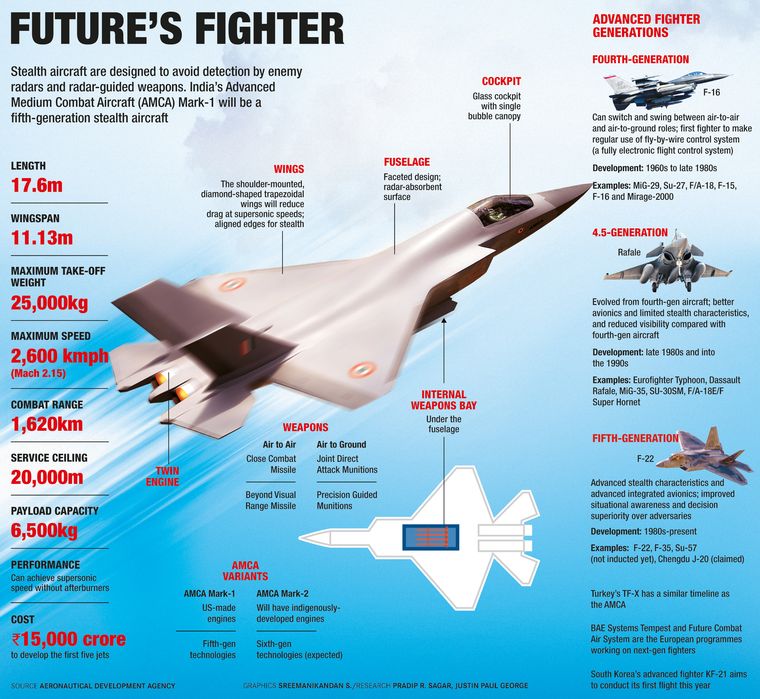
=========================================
@Joe Shearer @Gessler @Paro et al.
I will be following especially Mrs. Fairoza Naushad's career with great interest.....
Can't help but notice the southie and bong alliance in these high endeavours again....
I moved the discussion here, hope you dont mind.
F-35 is bit of an oddball w.r.t the (dual) internal weapon bay layout....mostly because:
A) it is single engined (thus an engine is intrinsically split in centerline with volumes on either side of it.... rather than have a more "natural" large planform for two engines that leans to a single weapon bay),
B) overall constrained airframe of many compromises needed (if you look at design reqs.) compared to many other 5th gen.
C) went for full commonality (in IWB and much else) with all three variants (and STOVL variant especially imposing quite a design restriction "penalty" on this weapon bay)
So in comparison, AMCA is just another conventional single internal weapon bay as there is no unique design challenge there like was given to F-35:
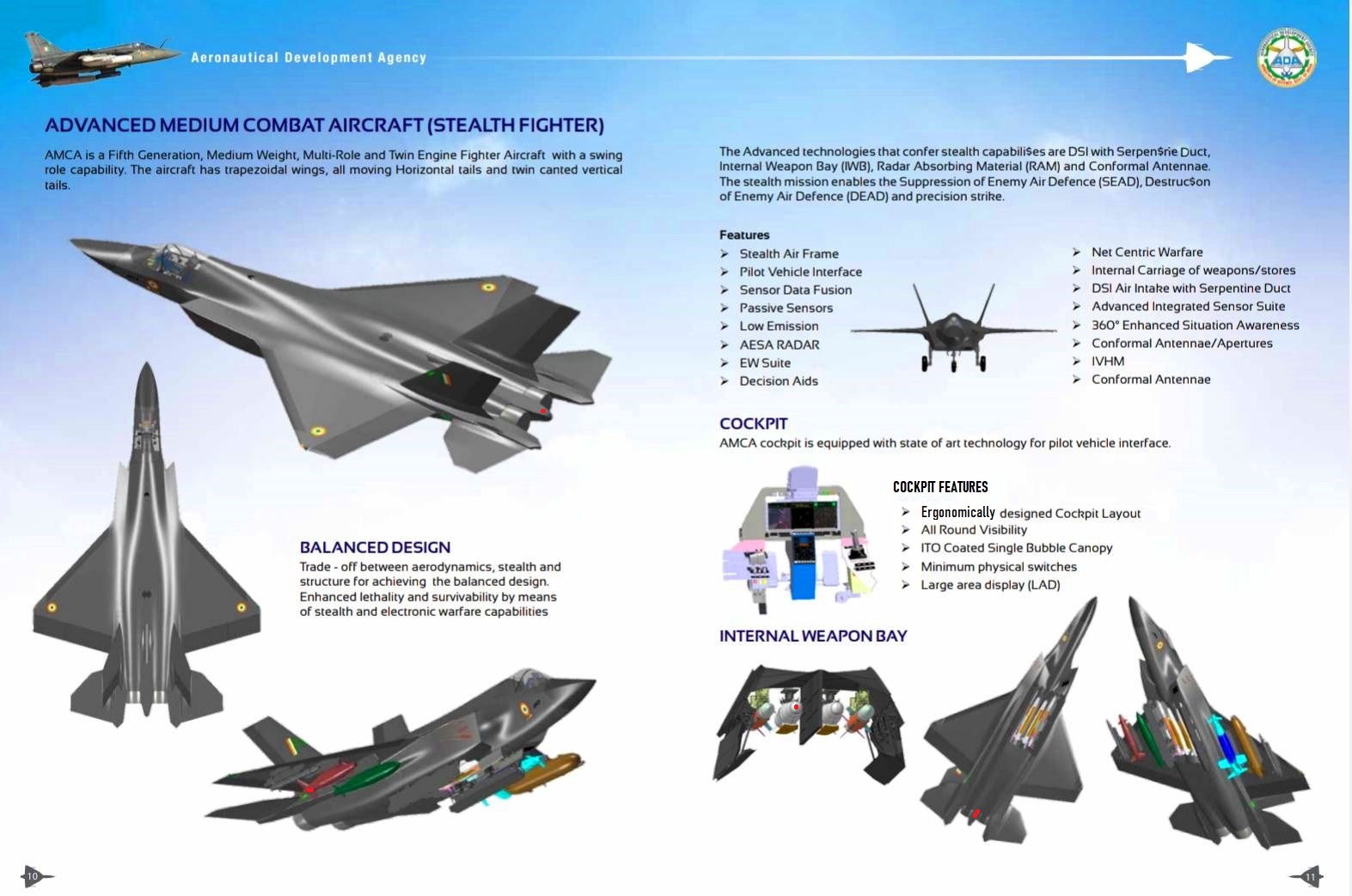

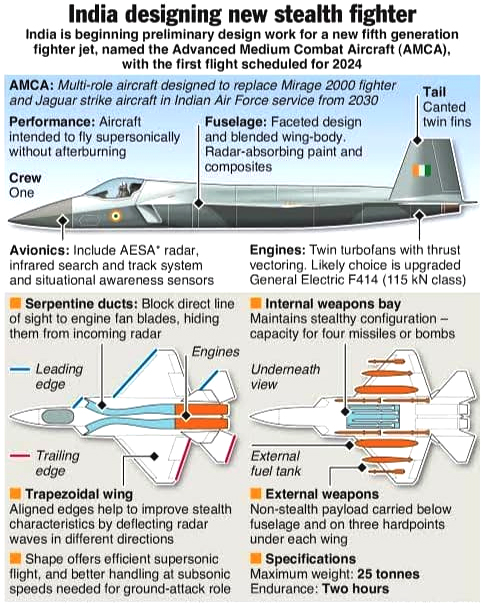
I would imagine KF-21 goes for a single IWB as well in its 5th gen incarnation and onwards.
@Baljak @MisterLike @Test7 @Cabatli_53 @Yasar @Gessler @Joe Shearer @Anmdt @Paro et al.
The dimension and MTOW is not much different with KF-21 except AMCA wil be a little bit longer, both also use the same engine(F414).
@Nilgiri what would be the main difference between AMCA and KF-21? Roles?
They will be overall fairly similar in most respects. KF-21 is 4.5 gen (right now), but it will evolve to 5 and 5.5 gen and then 6 gen etc with whatever blocks and new models that follow etc.
AMCA block 1 will be 5th gen...and also will evolve to 5.5 and 6 gen....its production schedule will lag that of KF-21 for some time as result (along due to the time/resource India spent exploring FGFA JV with Russia for a number of years...that is now dead/squandered essentially).
Other than that (program initial tech tree deployment etc) there is not much difference conceptually in their multirole objective.
Convergent evolution from requirements, expertise and tech tree available on hand played its role in their similarity past that as well.
Good observation.
I assume the IWB size/volume won't be much different.
How's the design for IWB gonna be? Big main IWB like F-22 or have 2 IWB(left and right) like F-35?
F-35 is bit of an oddball w.r.t the (dual) internal weapon bay layout....mostly because:
A) it is single engined (thus an engine is intrinsically split in centerline with volumes on either side of it.... rather than have a more "natural" large planform for two engines that leans to a single weapon bay),
B) overall constrained airframe of many compromises needed (if you look at design reqs.) compared to many other 5th gen.
C) went for full commonality (in IWB and much else) with all three variants (and STOVL variant especially imposing quite a design restriction "penalty" on this weapon bay)
So in comparison, AMCA is just another conventional single internal weapon bay as there is no unique design challenge there like was given to F-35:



I would imagine KF-21 goes for a single IWB as well in its 5th gen incarnation and onwards.
@Baljak @MisterLike @Test7 @Cabatli_53 @Yasar @Gessler @Joe Shearer @Anmdt @Paro et al.



